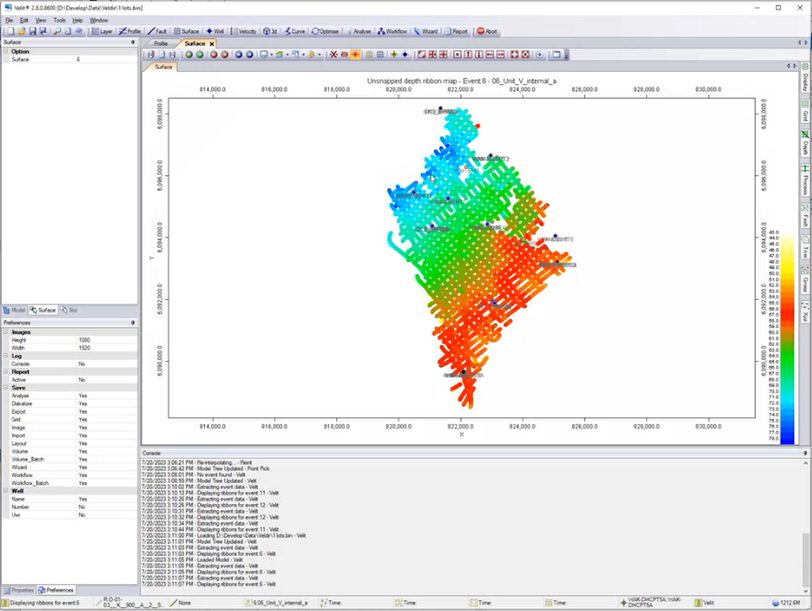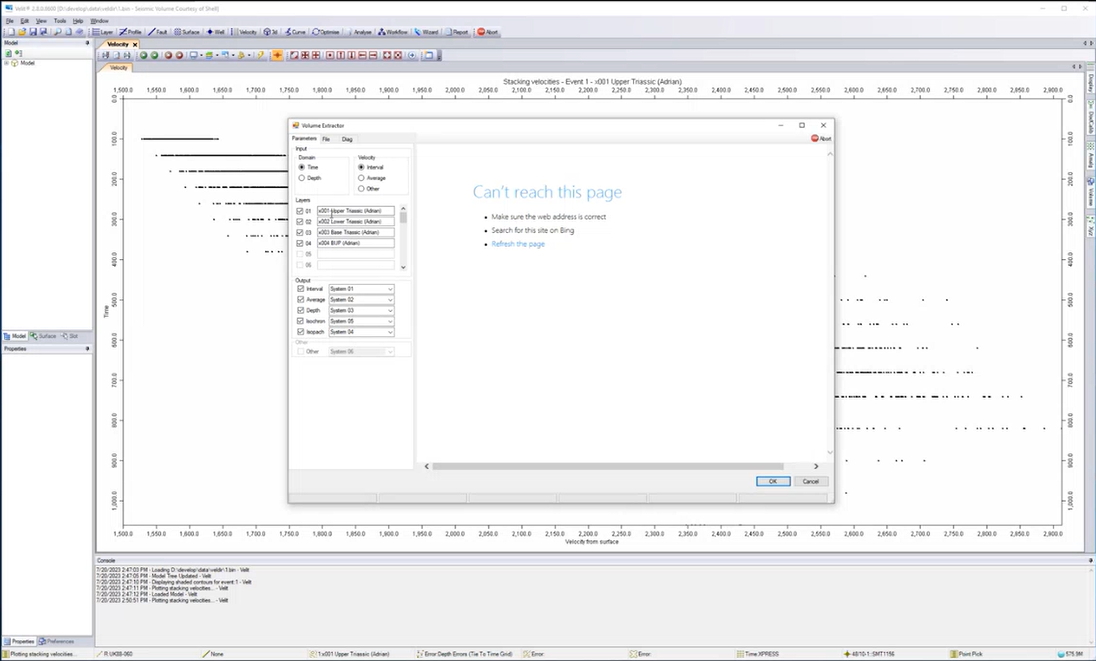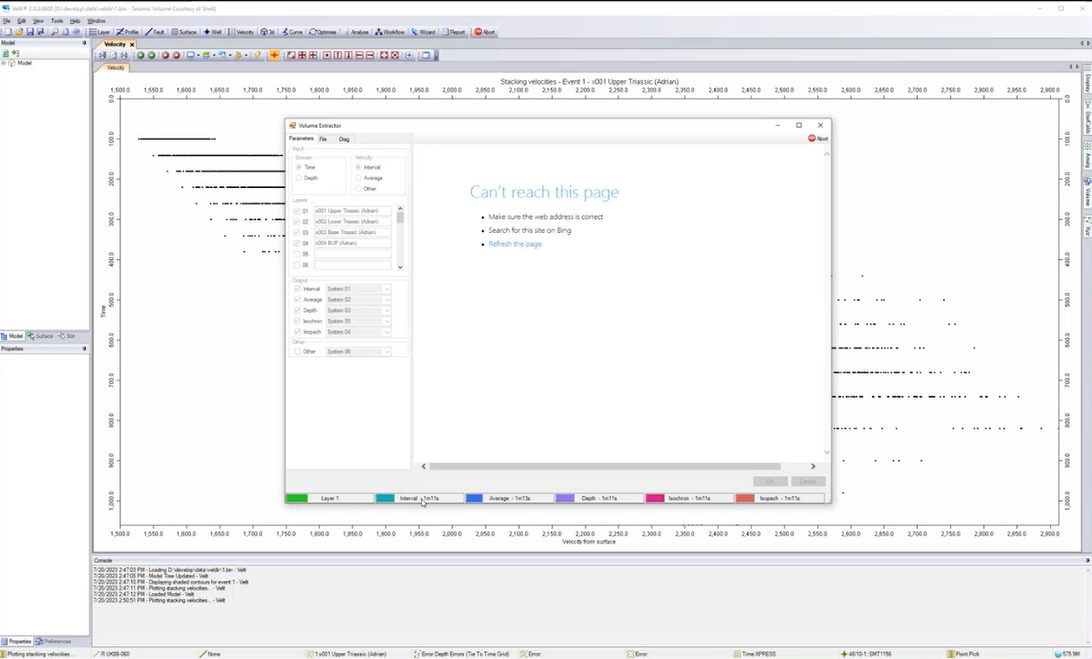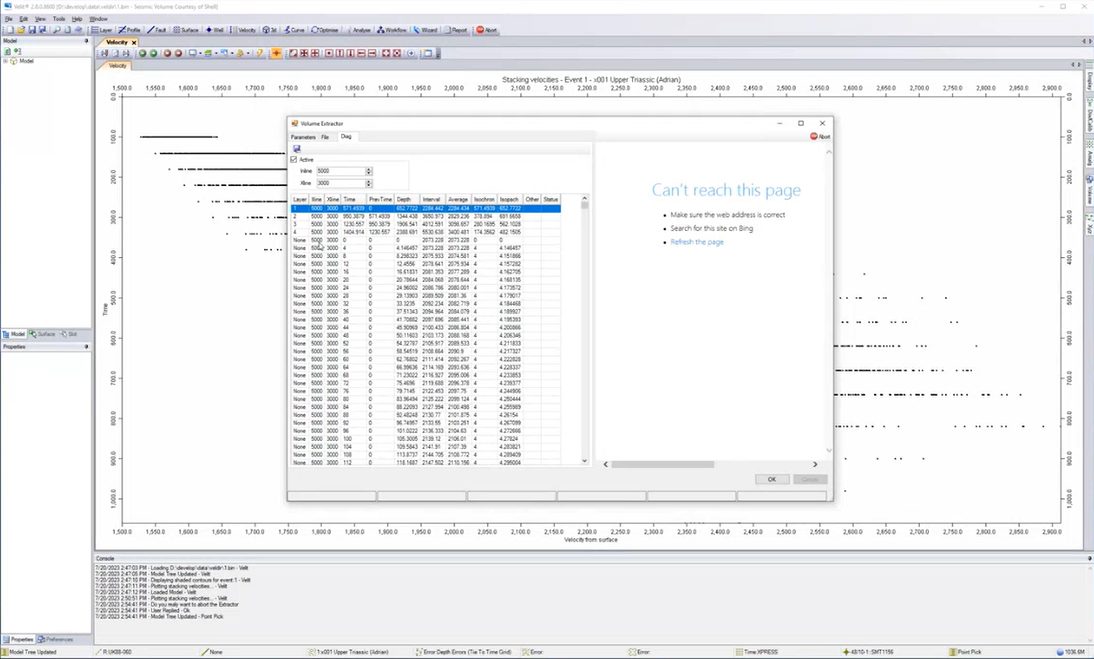In this month’s behind the scenes look at the development of our software, we turn our attention to the latest developments in Velit/VelPAK, which will be a useful tool for the Offshore Wind industry, as well as having other applicability for the Oil & Gas industry.
The following snapshots of the software are not in a finished state, as they are missing the help pages and perhaps the final aesthetic details of the finished product.
Volume Extractor
Our development efforts are presently focused on the ability to extract the Interval Velocity, Average Velocity, Depth, Isochron and Isopach grids from a volume, on a per layer basis. The key requirement to perform this operation will be the interpretation of your volume and inputting this into the software as Time Grids. This process can be achieved from a Time domain SEG-Y volume, or a Depth domain SEG-Y volume. You will also have the option to obtain ‘Other’ attributes from the SEG-Y based on your project aims.
The volume extractor tool uses ‘multi-threaded workers’ such that the processing time to perform this task is reduced proportionally to the number of cores available on your machine. You can see in the image below the coloured bars at the bottom of the Volume Extractor box illustrating the progress of the processing. On fairly modern PC’s with 8 cores we estimate between 3 – 5 minutes per layer of your model to process all the data you have selected. This new tool offers a quick way of generating a depth grid without having to apply a function to depth convert a given layer.
There is also a useful diagnostic utility that shows you, for a given Inline and Crossline, what the values are per layer for the Interval Velocity, Average Velocity, Depth, Isochron and Isopach grids such that you can QC the data before you set the software to process the data. These values are calculated based on the seismic sample rate and the associated velocity contained within the SEG-Y, such that the aforementioned grids can easily be computed.
Profile Extractor
Our development efforts also extend to being able to perform a similar operation for 2D data, where you have the option to select the Current line, All lines or a user selected set of lines as per your choice in the selection menu.
Historically, to perform a depth conversion in profile mode of the 2D data, you would have had to create a ‘snapped and sealed’ section. Now, however, this new module will enable you to be able to perform a depth conversion of ‘UnSnapped’ data. As you can see in the image below, you can get the software to process the interpolation function and it will automatically work-up the data at each shot point, such that it is capable of being depth converted (as illustrated by the black lines).
You can then set the software to process all lines you desire and you can dynamically view these lines, per layer, as a ribbon display in depth. Processing a handful of lines for multiple layers only takes a few minutes.
However, to process 250 lines for 12 layers can take about an hour on an 8 core machine, as you can see in the image below.
Offshore Wind
This easy-to-use tool is capable of working with typical Oil & Gas datasets, however it has been specifically designed to handle the high-frequency data used by the Offshore Wind industry. We believe this could be very useful to perform depth conversion where you have few, to no wells in your datasets and require an automated operation to process hundreds of lines of 2D data at the click of a button.
If you have any questions about the new developments of our software, or want to discuss our other products, or the depth conversion training courses we provide, then please get in touch with us at sales@equipoisesoftware.com where we’ll be happy to discuss your questions in more detail.




